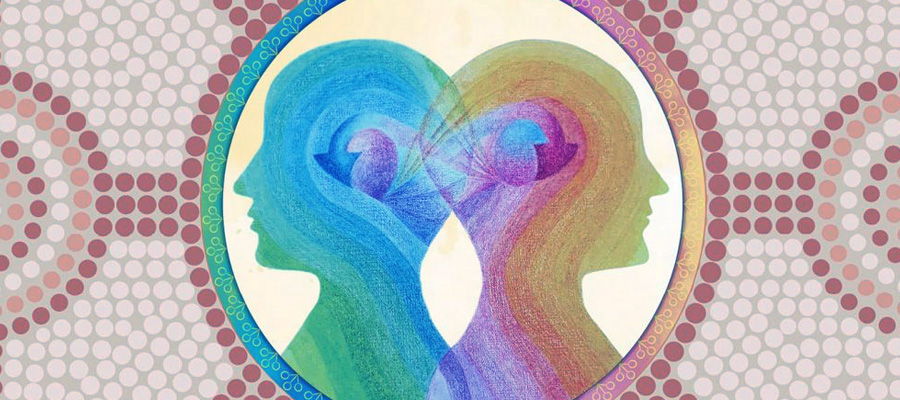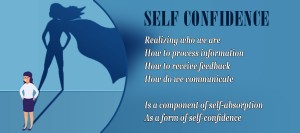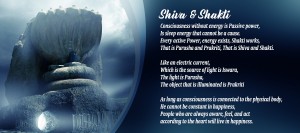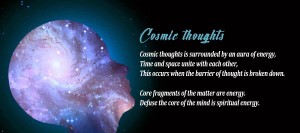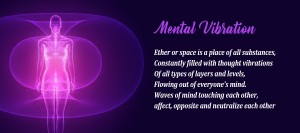- 1Consciousness and the Seven Dimensions
- 2The First Dimension of Consciousness - The Inside of the Object
- 3The Second Dimension of Consciousness - Five Sense
- 4Third Dimension of Consciousness - Thoughts and Feelings
- 4..1Third Dimension in Depth
- 5Fourth Dimension of Consciousness - Mountaintop Consciousness
- 5..1Steadiness in the 4th Dimension
- 6Fifth Dimension of Consciousness - The Mind of Light
- 6..1Blissfulness in the 5th Dimension
- 7Sixth Dimension of Consciousness - The World of Sounds & Colors
- 7..1Awareness Aware of Itself
- 8Seventh Dimension of Consciousness - Pure Inner Space
Third Dimension of Consciousness
– Thoughts and Feelings
It is in the third dimension that most people live most of the time. This is the world of thoughts and feelings, of emotions and intellectual theory. It thrives on novelty, new ideas, new feelings, new fashions, new discoveries, new anything. The third-dimensional world is changing rapidly.
When we open our eyes and look into the exterior world, where we perceive things through sight, hearing, touch, smell and taste, the five senses are going to naturally react. They react according to the personality and habit structure of man. If he smells something he is accustomed to smelling, he likes it. If he encounters an unfamiliar smell, the animal nature will recoil and he will say, “I don’t like it.” He forms likes and dislikes, loves and hates which later build through repetition into joys and sorrows. The flurry caused by this attraction and repelling in the nerve system of man as he relates to people and objects is the birth of the third dimension in man.
Man creates his own personal ego through these subtle reactions of his nerve system to the world of things and the world of other people. Once sufficient experience has been developed into habit patterns of action and reaction, he begins to dissect those things. He collects in his mind all of the good, positive, familiar impressions that he has grown accustomed to. Then he discards those impressions that have stirred his nerve system and those that are unfamiliar. Thus he enters fully into the third dimension of the mind, where most of the world as we generally know it takes place—much more so than in the first or second dimensions.
It is when we bring our subconscious and our intellectual facilities into the second dimension that we cause the third dimension to happen. We look at the world about us, up and down, right and left, and we begin to form comparisons in our analyzing things of the second dimension. Our likes and dislikes are the third dimension. The first and most simple structure of the third dimension is created in this way. Next we evaluate the likes and dislikes themselves, simultaneously creating the next more complex strata of third-dimensional existence. That is, we analyze our impressions, weighing them against the impressions of others. We think about our own thoughts. We have feelings about our feelings, and out of these ongoing comparisons the interwoven structure of this dimension evolves. Through our ratio of comparisons, first of objects, then of our interaction with objects, through nerve system response, and finally of our self-created thoughts and feelings, the third dimension gains prominence and severely entangles awareness in a fascinating and seemingly endless cinema.
When we sit with others in a room, the third dimension claims such priority that most of the activity takes place there. Of course, the second dimension is all about us and was prepared earlier. Someone had to arrange the furniture, clean the room, or even prepare a meal. But when we gather in the room, sit down together, we immediately lose consciousness of the second dimension. Instead, we relate almost exclusively to our feelings, emotions, desires, concepts, likes and dislikes. In talking, laughing and arguing back and forth we thrust our pranic life force into the third dimension, stimulate and are stimulated by the energy that others dedicate to the discussion. As the forces mix and mingle among everyone in the room, they produce either positive, creative overtones or negative, contentious ones, according to the chemicalization of the entire group mind.
The businessman or artist has cycles as well, but they are more consciously directed. In fact, they are partially creating the forces that influence others in the world. Their control of the forces of the third dimension comes through dealing positively and dynamically with themselves and through maintaining an active, creative state which dominates rather than is dominated by the swirling energies of other people. Through discipline, knowledge and restraints, they direct the mental and feeling forces positively and smooth out the cycles of inner-dimensional life.
The mature meditator remains independent of fluctuating cycles by not identifying falsely with the inevitable changes inherent in third-dimensional existence. He works to hold awareness constantly in the fourth dimension, from which the first, second and third are viewed in affectionate detachment. The fourth dimension is home base, the area of mind he returns to after meditation, not allowing awareness to flow to the extremities of gross instincts and intellect found in the third dimension…. In man the instinctive cycles comprise a relatively minimal portion of the third dimension. Emotional and intellectual cycles are more prominent. All people have emotional cycles. They are not always cheerfully liking and they are not always sorrowfully disliking. They are not always full and they are not always hungry. A constant ebb and flow of the odic forces characterizes this dimension. It is always in flux, always changing.
Third Dimension in Depth
The third dimension is the essence of duality, the shifting of forces constantly. Within the changing world of the third dimension are two basic and intricate energy flows. The first is a flow of force between people and things. This is a one-way flow through which people relate to objects. The second is a flow between two people or more and also between people and animals. Visualize a stream of energy generated in the body by the processes of life. This energy or prana constantly flows out from the central source of energy and constitutes the aura, constitutes the physical energy that moves the body, constitutes thoughts and feelings. This prana creates a force field around the body. As soon as two people associate, these force fields interact, or the two energy streams interchange. Should these energies be of a like nature, the result is friendship. When we understand these energies as they combine, attract and repel in human relationships, we then begin to discover the constituent parts of what we call the world.
From the point of view of the second dimension looking into the third, awareness is awed by the seemingly powerful feelings, emotions and motivating forces of the third dimension. We feel victims of forces beyond our power to control. Generally, if we go into a study of the mind from this perspective of looking, in a sense, from the second dimension into the third and fourth, we analyze the surface by asking ourselves, “Why did this happen to me? Why did that happen? What did I do to deserve this?” Many, many people live their entire lifetime in a conscious-mind state, trying to analyze the subconscious, and discover very little for their efforts.

